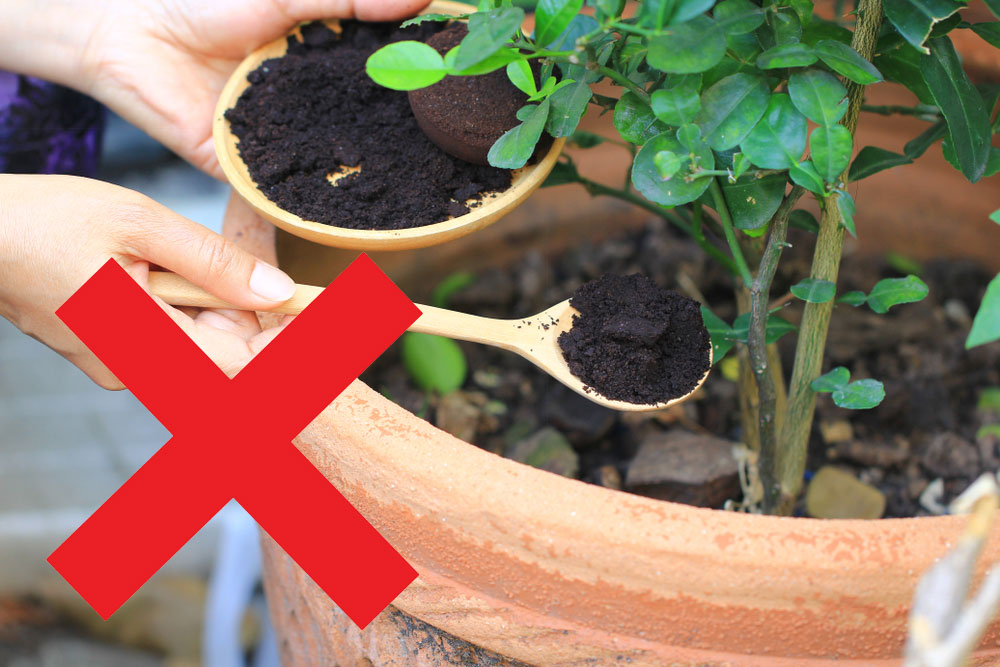
Love your morning cup of coffee? Don’t toss those used grounds! They hold a secret power to enhance your garden.
Coffee grounds offer a natural boost of nutrients and acidity that certain plants absolutely adore.
Let’s dive into ten plants that will happily welcome coffee grounds into their world.
1. Azaleas

These flowering beauties crave acidic soil, and coffee grounds deliver just that. Sprinkle grounds around the base of your azaleas for vibrant blooms and lush foliage.
2. Rhododendrons

Similar to azaleas, rhododendrons thrive in acidic conditions. Coffee grounds become a natural fertilizer that encourages healthy growth and stunning flowers.
3. Hydrangeas

Want those dreamy blue hydrangea blooms? Coffee grounds help! They add acidity to the soil, influencing the flower color towards beautiful shades of blue or purple
4. Blueberries

These sweet and tangy berries flourish in acidic soil. Coffee grounds are a natural way to create the ideal environment, leading to a bountiful blueberry harvest.
5. Roses

Give your roses a boost of nourishment with coffee grounds. They improve the soil and provide essential nutrients, promoting healthy growth and vibrant, fragrant blooms.
6. Tomatoes
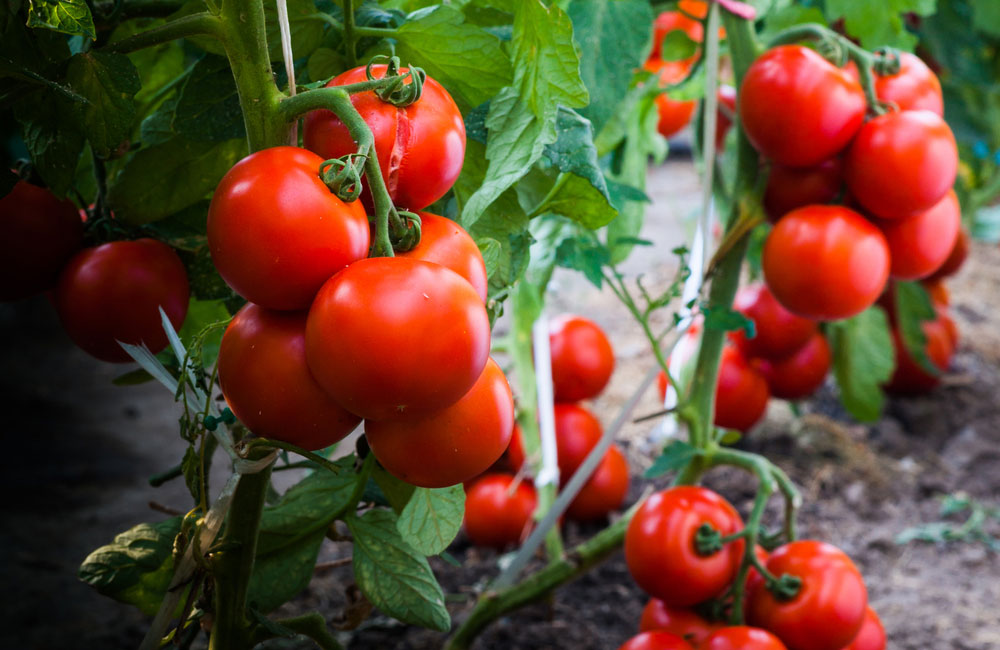
Coffee grounds act as a natural fertilizer for tomatoes, rich in nitrogen for strong, productive plants. Plus, the aroma may help deter some pests.
7. Carrots

Not only do coffee grounds enhance the soil, but their slightly abrasive texture can deter pests that love to munch on carrots. Enjoy sweeter, healthier carrots thanks to your coffee habit.
8. Radishes

These peppery root vegetables are fast growers and benefit from the nutrient boost in coffee grounds. Expect a larger, crispier radish crop.
9. Evergreen Trees

Evergreens like pines and spruces prefer a touch of acidity in their soil. Add coffee grounds to their base for long-term health and vibrant green needles.
10. Lilies
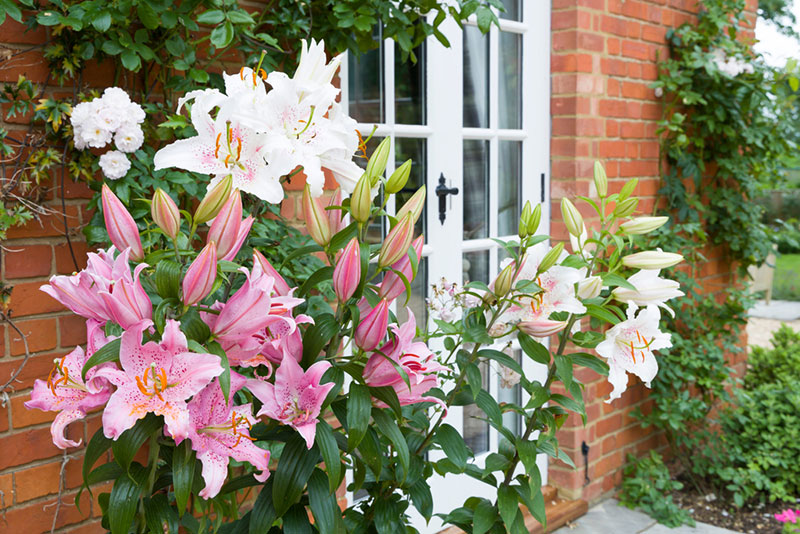
Certain lily varieties, like Asiatic and Oriental lilies, enjoy a slightly acidic environment. Mix coffee grounds into the soil for more beautiful, long-lasting blooms.
11. Hibiscus

These tropical beauties generally prefer slightly acidic soil, making coffee grounds a potential perk. Use them moderately by adding to your compost or creating a diluted liquid fertilizer. Monitor your hibiscus’ response and the soil pH for the best results.
12. Camellias

Camellias are lovely flowering plants with beautiful blooms. I find that they thrive with the help of coffee grounds. The grounds add acidity and nutrients to the soil, which Camellias love.
When using coffee grounds, I usually sprinkle them around the base of the plant. It’s essential to mix them into the soil gently.
This helps improve drainage and keeps the soil rich. My Camellias seem healthier and more vibrant with this simple addition to their care.
13. Peppers

I love using coffee grounds for my pepper plants. The grounds add important nutrients like nitrogen, which helps peppers grow strong and healthy.
I sprinkle coffee grounds around the base of my pepper plants. This helps improve the soil quality and keeps the plants happy.
Using coffee grounds also helps keep away some pests that can bother the peppers. Just remember not to use too much, as it can make the soil too acidic.
14. Potatoes

I love growing potatoes in my garden. They do really well with coffee grounds mixed into the soil.
Coffee grounds add nitrogen, which helps potato plants grow strong and leafy.
I usually sprinkle the used grounds around the base of my potato plants. This also keeps pests away because some bugs don’t like the smell of coffee.
15. Eggplants

I love growing eggplants in my garden. They thrive with coffee grounds added to the soil. The grounds add nitrogen, which eggplants need for healthy growth.
I sprinkle coffee grounds around the base of my eggplants. This helps improve the soil’s texture. The grounds also attract earthworms, which are great for aerating the soil.
16. Parsley

Parsley is a great herb to grow at home. I find it handy for adding fresh flavor to dishes. Coffee grounds can really help parsley plants thrive.
The grounds add nitrogen to the soil. This nutrient is important for parsley’s leafy growth. It makes the leaves greener and more lush.
17. Strawberries
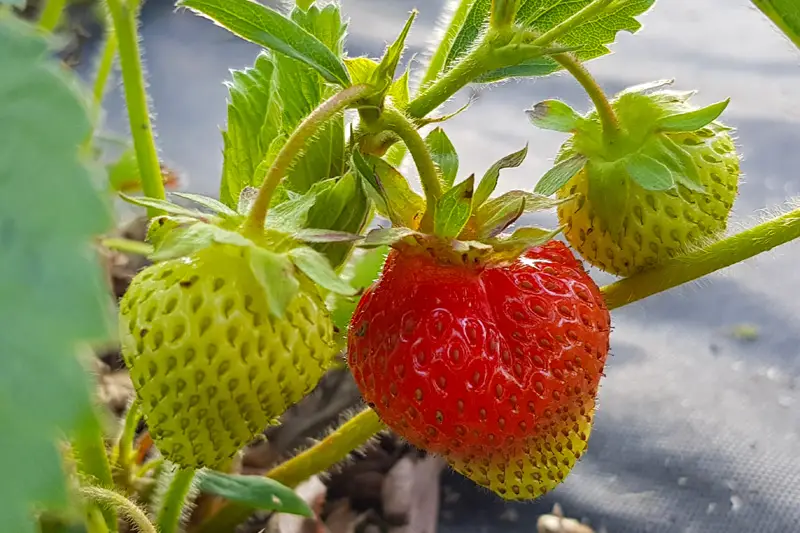
I love growing strawberries in my garden. Adding coffee grounds to the soil can make a big difference. Coffee grounds add nitrogen, which helps strawberries grow strong.
I also notice that the grounds help keep the soil moist. This is great because strawberries need a lot of water.
Using coffee grounds also helps keep pests away from my strawberries. The smell seems to deter insects.
18. Citrus trees

I have found that citrus trees love coffee grounds. The grounds help improve soil structure and provide essential nutrients.
Coffee grounds add nitrogen to the soil. This is important for healthy tree growth and fruit production.
They also improve soil drainage. Citrus trees don’t like waterlogged roots, so this is helpful.
19. African Violets

African Violets are popular houseplants with beautiful flowers. I found that coffee grounds can be great for these plants.
Coffee grounds add extra acid to the soil, which African Violets love. They help keep the plants healthy and vibrant.
Sprinkle a small amount of used coffee grounds on the soil. This gives a gentle nutrient boost. Just be careful not to overdo it. Too much can harm them.
Mixing the coffee grounds lightly into the soil works best. This way, the nutrients spread evenly.
20. Peace lilies

I love using coffee grounds for my Peace Lilies. They seem to thrive with the extra boost. These plants enjoy slightly acidic soil, and coffee grounds help with that.
When I sprinkle used coffee grounds around the base of my Peace Lilies, they get nutrients like nitrogen. This promotes healthy, green leaves.
It’s important to use coffee grounds sparingly. Too much can make the soil too acidic. I usually mix the grounds into the top layer of soil. That way, they break down slowly.
I’ve noticed my Peace Lilies have more vibrant blooms since I started using coffee grounds. It’s a simple way to keep them happy and healthy.
21. Snake Plants
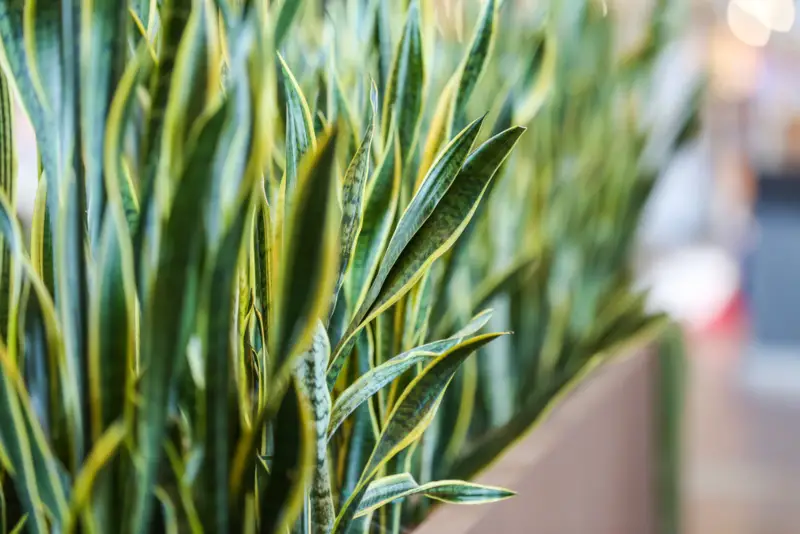
I love how easy it is to care for snake plants. They don’t need much attention, which is great if you’re busy like me.
Coffee grounds can help snake plants by adding nitrogen to the soil. This helps the leaves grow strong and green. It’s a simple way to give them a little boost.
Just remember to use coffee grounds in moderation. Too much can make the soil too acidic. Sprinkle a small amount on top of the soil or mix it in lightly.
22. Christmas Cactus

I’ve found that Christmas Cactus loves coffee grounds. The grounds add nitrogen to the soil, which helps the plant grow. I sprinkle used coffee grounds around the base of the cactus. The plant seems to thrive with this extra boost.
Just be careful not to overdo it; too much can make the soil too acidic.
23. Corn

I love growing corn, and coffee grounds can really help.
The nitrogen in coffee grounds is great for corn. Corn needs a lot of nitrogen to grow tall and strong. Adding coffee grounds boosts the soil and helps the corn grow better.
Sometimes, I sprinkle coffee grounds around my corn plants. It’s important to mix them into the soil to avoid clumps. This helps prevent mold and keeps the soil healthy.
24. Gardenias

Gardenias are beautiful flowering plants that love acidic soil. Coffee grounds are great for them because they help lower the soil’s pH. I usually sprinkle coffee grounds around the base of my gardenias.
These plants thrive on the nutrients coffee grounds provide, like nitrogen. It helps them grow strong and healthy. I always see more blooms after I’ve added coffee grounds to the soil.
To avoid mold, I make sure not to pile too many grounds at once. Just a thin layer is enough. Using coffee grounds has made my gardenia care routine simple and effective.
25. Raspberries

I love growing raspberries in my garden. They produce sweet, juicy berries that are perfect for snacking or adding to desserts.
Coffee grounds can be a great addition to their soil. Raspberries prefer slightly acidic soil, and coffee grounds help lower the pH.
26. Philodendrons

Philodendrons are popular houseplants known for their lush, green leaves. They thrive in a variety of conditions, making them a favorite for many plant lovers.
I find that adding coffee grounds to the soil can be beneficial for these plants. Coffee grounds can add nutrients and improve soil structure, which helps philodendrons grow strong.
It’s important to use coffee grounds sparingly, though. Too much can make the soil too acidic. I typically mix the coffee grounds with compost or sprinkle a small amount directly onto the soil. This way, the plants get a nice, balanced boost.
Benefits of Coffee Grounds as Fertilizer
Using coffee grounds in your garden can provide important nutrients, improve soil structure, and help keep pests away.
Nutrient Content
Coffee grounds are rich in nitrogen, which is a critical nutrient for plants. Nitrogen helps promote leaf growth and keeps plants healthy.
They also contain other important minerals like potassium, phosphorus, magnesium, and copper. These nutrients help plants blossom and produce fruit. Additionally, coffee grounds can balance soil pH, making the environment more suitable for some plants.
Soil Structure Improvement
Adding coffee grounds to soil can improve its texture. They help create good drainage, which prevents water from sitting around plant roots and causing rot.
Coffee grounds also help soils retain moisture, ensuring plants get enough water even on hot days. They can attract earthworms, which break down organic material and help aerate the soil.

Natural Pest Repellent
Coffee grounds can help keep pests away without harmful chemicals. Their smell deters slugs and snails, which often damage plants.
They also contain compounds that can repel ants and other insects. By using coffee grounds, you create a natural barrier that keeps your plants safe from unwanted visitors. They’re a simple and effective way to protect your garden.
How to Use Coffee Grounds in Your Garden
Coffee grounds can be a great addition to your garden, helping to nourish plants and improve soil quality. Here are three ways to use coffee grounds most effectively.
Direct Application
Sprinkling coffee grounds directly onto the soil is simple and effective. Use them around acid-loving plants like roses, azaleas, and rhododendrons. You can spread a thin layer—no more than half an inch thick—around the base of the plants.
Be careful not to pile up the grounds too much. Thick layers can become compacted and might block water and air from reaching the plant roots.
Mix the coffee grounds lightly into the top layer of soil. This helps to avoid clumping and promotes better absorption of nutrients.
Composting with Coffee Grounds
Adding coffee grounds to your compost bin enriches the compost with nitrogen. Coffee grounds work great when combined with other kitchen scraps like fruit peels and vegetable waste. They balance well with “brown” materials like dried leaves or cardboard.
Remember to keep a balanced ratio. Aim for about one part coffee grounds to three parts brown materials. This balance minimizes the risk of a smelly compost pile and accelerates the decomposition process.
If you don’t compost already, starting one is easy. Just layer your kitchen scraps and garden waste in a bin, turning it occasionally to aerate.
Making Coffee Ground Tea
Coffee ground tea is another way to nourish plants. Start by soaking about two cups of coffee grounds in a five-gallon bucket of water for a few days. Strain the liquid to remove any solid pieces.
Use this nutrient-rich water to feed your plants by pouring it at the base. It’s similar to how you’d use liquid fertilizer. Coffee ground tea can boost the growth of many plants, especially houseplants and garden vegetables.
Pour the liquid directly on the soil, avoiding the foliage. It’s a gentle, effective way to provide nutrients without risking burn or over-fertilization.











